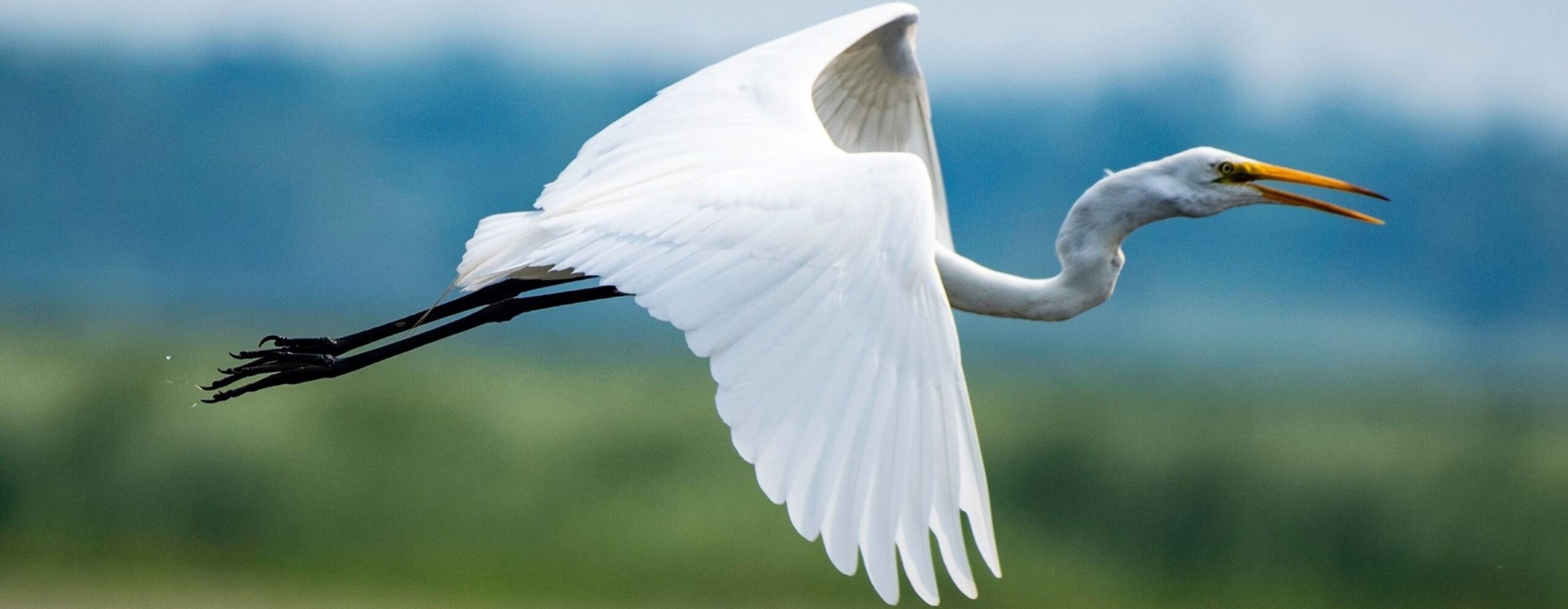Statement filed with Georgia Department of Natural Resources by Center for a Sustainable Coast, March 20, 2023
The Proposed Activity
In March 2020, Twin Pines, LLC, an Alabama-based mining company, submitted a revised application to the U.S. Army Corps of Engineers (USACE) seeking issuance of a permit to “construct a demonstration mining project on 1,042 acres that will mine heavy mineral sands on 898 acres over 6 years” from Trail Ridge near the southeastern edge of the Okefenokee Swamp. The application was later reduced to 556 acres for a ‘Phase 1’ mining project.
From the U.S. Fish & Wildlife Service: “Trail Ridge forms a rim or geomorphological “dam” on the east side of the swamp maintaining the hydrology of the swamp. The soil of Trail Ridge has a profile of distinct layers. This gives it water holding and water movement characteristics.”
Mining project proponents seek to strip-mine heavy minerals (titanium and zirconium) to a depth of 50 feet below the ground surface, which is below the level of the Okefenokee Swamp depression and essential to maintaining surface water and groundwater hydrology in this region of southeast Georgia.
Unprecedented & Tenuous Permitting Procedures
Since the adoption of federal environmental laws in the early 1970, no project of this magnitude and significance has failed to require an individual federal permitting review process. Due to the unique timing and circumstances of this ill-advised mining proposal, the State of Georgia is now exclusively authorized to administer the permitting process, and Georgia EPD is in the highly controversial, politically vulnerable position of evaluating anticipated impacts that the project will impose on the Okefenokee National Wildlife Refuge [ONWR].
Resources at Risk & Reasons for Opposing the Project Permit
The Okefenokee Swamp is listed as one of the Seven Natural Wonders of Georgia and is the largest blackwater swamp in North America. Most of it is under federal protection within the boundaries of the Okefenokee Wildlife Refuge and the Okefenokee Wilderness. It is the largest National Wildlife Refuge east of the Mississippi River and was designated a Wetland of International Importance by the Wetlands Convention in 1986.
- The Okefenokee Swamp is also the headwaters of the St. Mary’s River and the Suwanee River. Given the unique value and vulnerabilities of the Refuge’s complex ecosystem and living resources, any potentially damaging activities in the vicinity are of dubious justification, and the standards required for properly evaluating and enforcing precautionary protection measures would be so rigorous under these circumstances that the costs would far exceed any benefit of the project.
- The hydrology at the proposed project site is complex and sensitive to alterations that may disrupt and/or degrade the Okefenokee National Wildlife Refuge (ONWR). Although the applicant has alleged a mining methodology that restores the soil substrate, the proposed technique is unproven. Given the importance of protecting the unique conservation and recreational benefits of the ONWR, we believe it is extremely important to thoroughly evaluate the proposal, which is not being required.
- The escalating disruptive effects of climate change in the area could produce extreme drought, extreme precipitation, or both, which further complicate the ability to confidently predict and assess the hydrological risks of mining at the site and how to control them. Thus, risks of unacceptably adverse outcomes are not only great, they are worsening.
- Subsurface conditions altered by the proposed mining operations could significantly alter water flow and water quality entering the ONWR. Even subtle modifications that appear to be marginal could produce significant and unacceptable cumulative, long-term environmental consequences. It is possible that such impacts would not be perceived or measurable until after significant damage becomes irreversible.
- According to the U.S. Fish and Wildlife Service, Trail Ridge is part of a recovery unit for the federally threatened eastern indigo snake (Drymarchon couperi) and “[e]liminating a significant area of habitat from a recovery unit may eliminate the value of the entire unit, and delay species recovery.” A thorough survey of the presence of this species as well as the gopher tortoise (Gopherus polyphemus) - classified as threatened by both Georgia and the US Fish & Wildlife Service as well as being considered a keystone species - is warranted since it is likely that their habitat will be permanently degraded by surface mining disruptions.
Former Secretary of the Interior, Bruce Babbit, who opposed an earlier proposal to strip mine on another Trail Ridge tract abutting the ONWR, summed up our position aptly when he said, "Titanium is a common mineral, while the Okefenokee is a very uncommon swamp." This project has a large footprint which could be multiplied many times by subsequent projects along the Trail Ridge formation.
Additional authoritative objections to the project include:
• U.S. Interior Secretary Deb Haaland urged the state not to approve the mine last year after visiting it with Senator Ossoff.
• The U.S. Fish and Wildlife Service [USFWS] — which protects and manages the swamp — has said the proposal would have "major negative impacts" to the Okefenokee.
• In his comments, Senator Ossoff cited USFWS and a report by University of Georgia hydrologist, Rhett Jackson, who said the mining plan "fails to address key environmental issues."
• Our own board member, Dr. Jim Reichard, a respected veteran Geo-Hydrologist on the faculty of Georgia Southern University, advises us that, “Replacing this complex layered deposit [at Trail Ridge] with homogenized waste material from the mining operation is expected to cause an increase in permeability across Trail Ridge, permanently lowering the water table in the Okefenokee. This will drastically alter the swamp’s delicate ecosystem and also make it more prone to drought and wildfires. Risking such a national treasure for a small, short-term economic gain hardly seems like a wise choice.”
Although engineering solutions to these hazards are claimed, such methods remain unproven and are prone to unanticipated flaws. Considering the disastrous downside consequences, the Trail Ridge site is an unacceptably irresponsible place to experiment with engineering techniques.
It would be a grave error to set or support a precedent of permitting surface mining at such a uniquely complex, vulnerable, and valuable location. To protect the ONWR and honor the public interest that EPD is legally obligated to uphold, this proposed mining activity should be denied.
Respectfully,
David C. Kyler, Co-Founder & Director
Center for a Sustainable Coast

